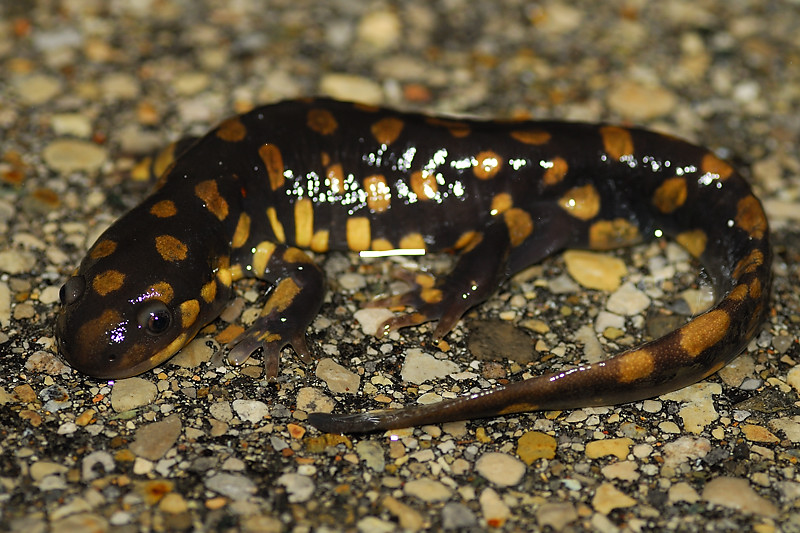
My first run in with these behemioths was actually when I was living in the suberbs of Detroit while growing up. We had a small woods a little down the road behind our subdivision that harbored redback and blue spotted salamanders in decent numbers. My brothers and I found them with ease back in the day and enjoyed looking them up in our fathers worn Peterson Guide. Although I can't recall ever actually flipped a tiger salamander, our close friends frequently found them in the pool and window wells every spring/summer. One year, we kept one, and my younger brother even took it in to school were it thrived and was extremely well taken care of.
Unfortunately, the places I lived in the southern and eastern parts of Ohio weren't really known to harbor tiger salamanders. I always hoped I could turn one up in south central Ohio, or along the Ohio river floodplain. It sure is not out of the question, and Carl Brune's spectactular Ambystoma find this year further reiterates the fact that we learn new things about these animals every day. Even Cincinnati was known to have a few older records, but alas, it was not to be for me. I traveled north a few times and was able to observe 3 tigers at 2 different locations during my time in Ohio. Usually this required some extensive planning, epic rain dances, a good deal of gas and even more luck. If you can find some of the right areas, they can actually be fairly common at the right times of the year.
Amystoma tigrinum are monsters. They can reach 12 inches, but most adults fall in the 7-9 inch range. This is still a good deal larger than most other Ambystomids, and they tend to run a bit thicker too. These guys are the Barry Bonds of the salamander world. They also have monstrous heads, far bigger in proportion to the rest of their body when compaired to their brethren. The larva also tend to get quite large, and some populations have been known to retain their larval form, although this is much more common in the west.
In Ohio, tigers are primarily found in the glaciated region of the state. You can draw a rough line from Cincinnati to Cleveland. I have had most luck around the Dayton and Columbus areas. In Michigan they tend to be much more commonly found, and range throughout most of the lower peninsula.
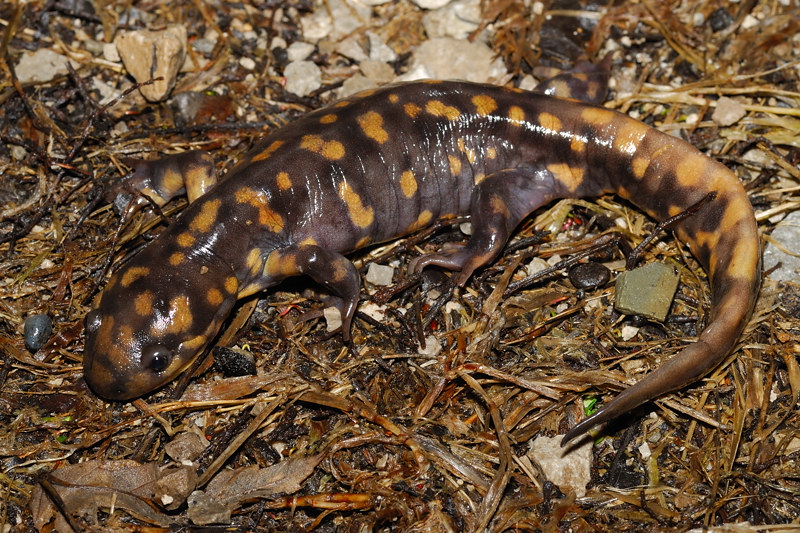
I have yet to find any Michgan monsters, but I have seen more tigers this season alone than I ever did during my years in Ohio. Admittedly, much of this is luck. I didn't see any last season, (but I was still in Ohio during the spring) and I just found 3 at one location last week. Interestingly, all of the ones I have seen have had very dark coloration and minimal amounts of spotting, suggestive of faily young animals. All three found last week were like this, but they were a decent 5-6 inches long.
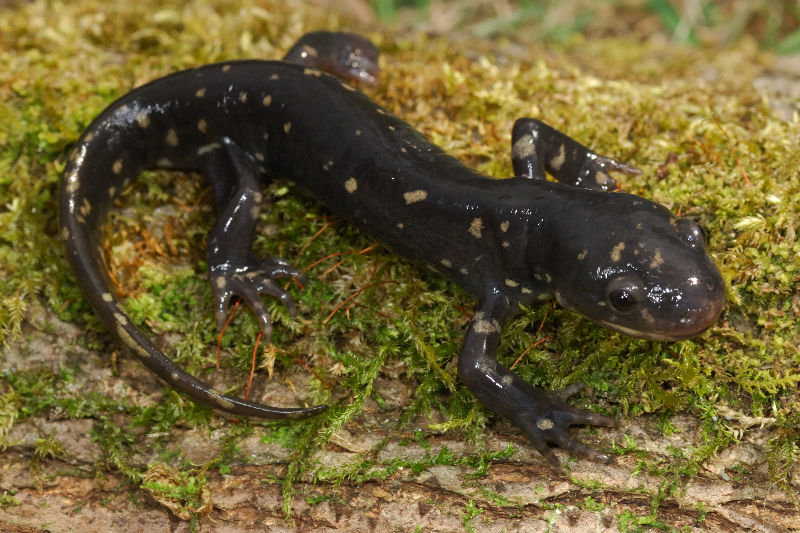
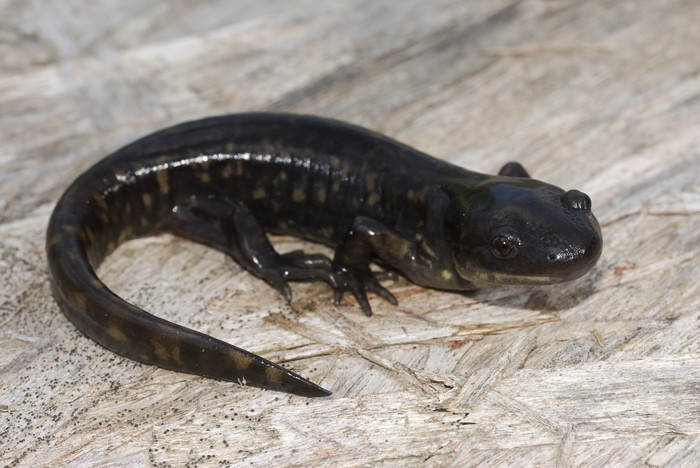
If you play your cards right and get out to the fields in the spring or fall during some nice night time rains, you might really hit it big and see a few of these in a night. If not, keep checking your neighbors pool because you never know when a monster might turn up.
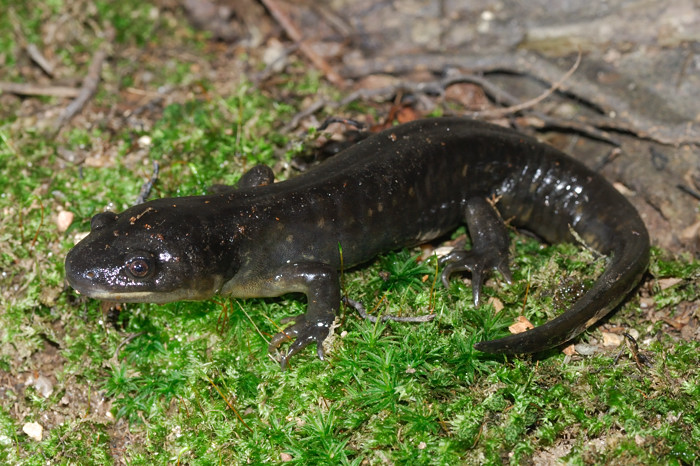


Awesome salamanders and great photos. Enjoying your blog.
ReplyDelete